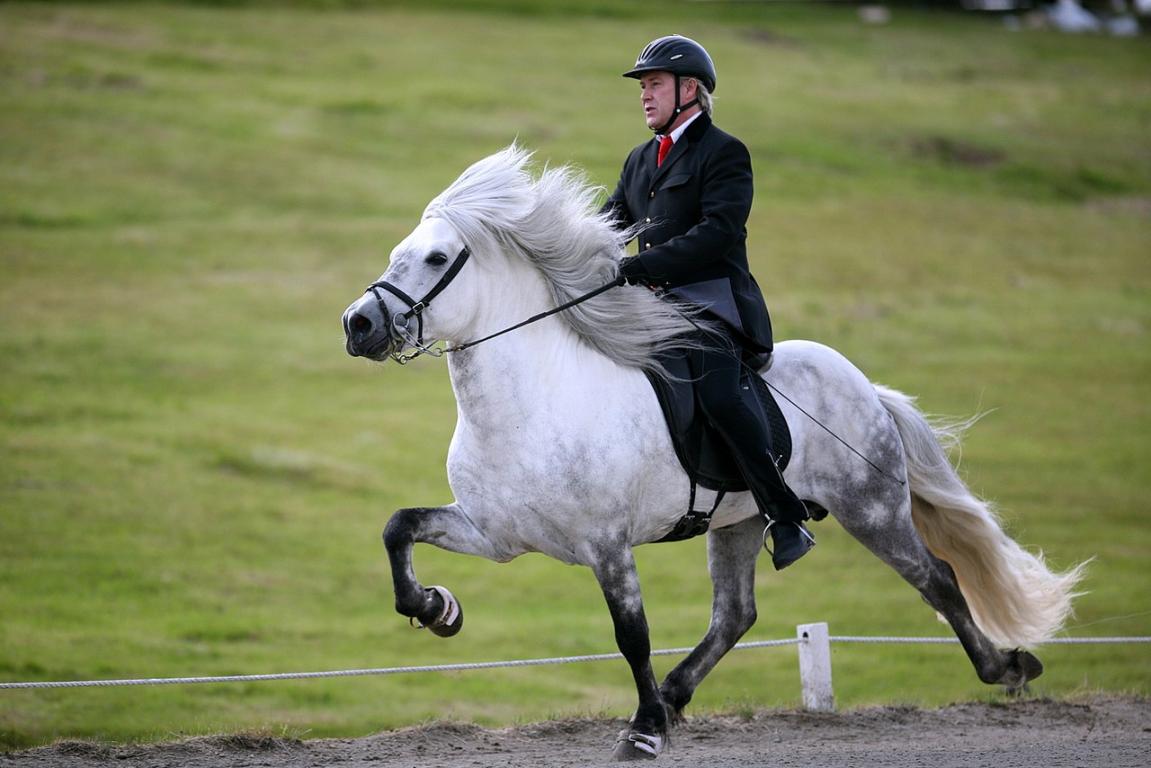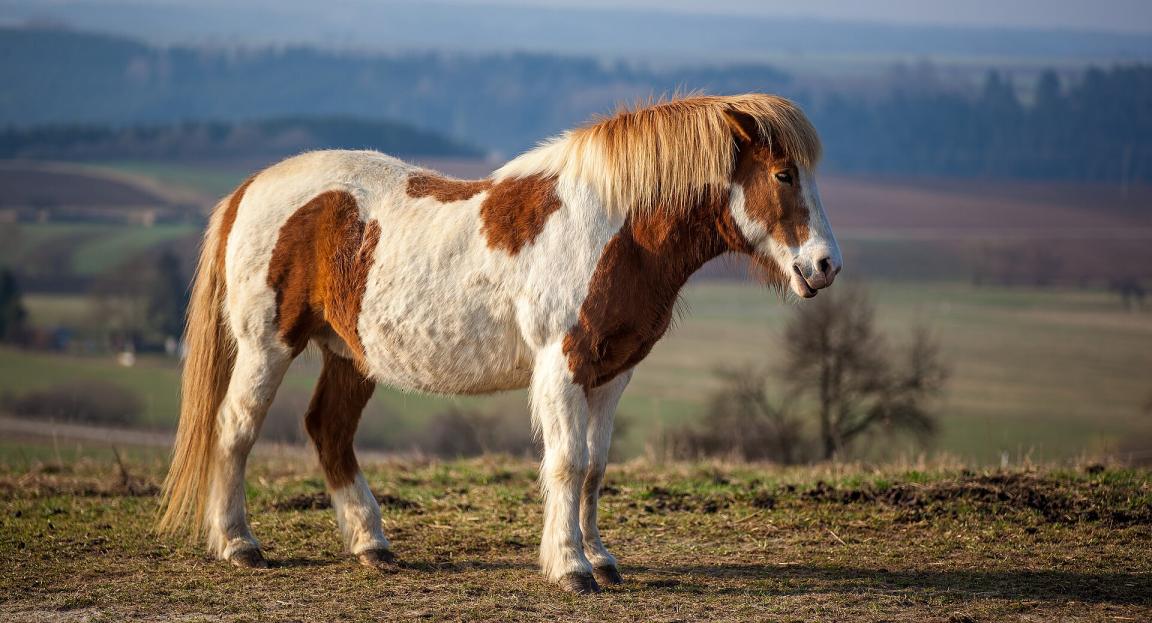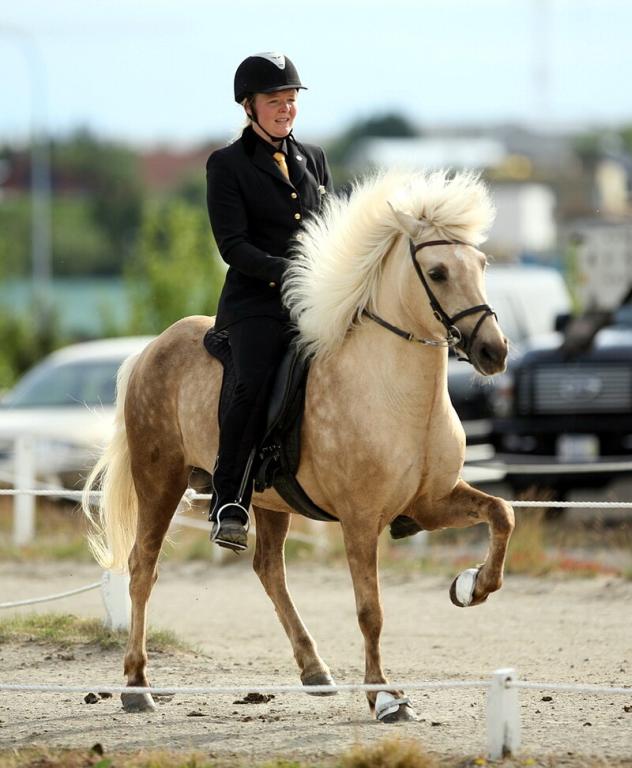
Continent: Europe
Country: Iceland
Weight: 330 – 450 kg
Height: 128 – 148 cm



The Icelandic Horse is an indigenous breed of Iceland, directly descended from the small Nordic horses brought by the Viking settlers in the 9th century. Isolated on the island for more than a thousand years due to a strict ban on the importation of horses, it has evolved without outside crossbreeding, making it one of the purest breeds in the world.
Raised in a harsh and unforgiving environment of volcanoes, moorlands, and extreme climates, the Icelandic Horse developed exceptional hardiness, rare endurance, and unique gaits such as the tölt and occasionally the flying pace, which set it apart from other breeds.
In Iceland, it is regarded not only as a working and transportation companion, but also as a cultural symbol deeply rooted in the country’s history and identity.
The Icelandic Horse has been bred for more than a thousand years throughout the whole of Iceland. Each region, from the Eastern fjords to the Southern plains and the volcanic highlands, has shaped an animal that is enduring, hardy, and perfectly adapted to extreme climates.
While Iceland remains the heart of breeding, many horses were exported during the 20th century. Today, active breeding exists in:
A fundamental rule applies: any horse exported from Iceland can never return. This measure protects the Icelandic herd from disease and preserves the breed’s genetic purity. Breeding is thus divided between:
The Icelandic Horse is one of the purest breeds in the world, thanks to a ban on imports that has been in effect for more than 1,000 years. No outside crossbreeding is allowed, ensuring an exceptional genetic uniformity. This makes it a unique example of reproductive isolation in the equine world.
The isolation of Iceland has preserved rare traits:
Unlike many European horses, the Icelandic Horse has not been used for improving external breeds due to its isolation. Its genetic value lies mainly in the preservation of its integrity and its unique traits.
Today, FEIF and breeders’ associations work to safeguard this genetic purity. The Icelandic Horse is a major example of a closed breed, showing how equine heritage can remain intact through strict rules and rigorous stud-book management.
The Icelandic Horse descends directly from the Nordic horses imported by the Norwegian Vikings in the 9th and 10th centuries. These animals, related to Celtic and Scandinavian horses of the time, were brought to the island during the great migrations to Iceland.
As early as the 10th century, the Icelandic Parliament (Althing) banned the import of foreign horses. For more than a thousand years, no outside crossbreeding has occurred, making the Icelandic one of the purest and most uniform breeds in the world. This rule, still in effect, explains the breed’s uniformity and perfect adaptation to the Icelandic environment.
For centuries, the Icelandic Horse was the only means of transport in the country. Its ability to cross difficult terrain volcanoes, rivers, moorlands made it an essential companion for farmers, travelers, and herdsmen. It was used both for transporting goods and for moving livestock across the highlands.
In the 19th century, with the arrival of roads and vehicles, the Icelandic’s practical use declined. However, its role in Icelandic culture and its symbolic status ensured its survival. Breeders’ associations were formed in the early 20th century, leading to the creation of the official stud-book in 1923.
Since the second half of the 20th century, the Icelandic Horse has been exported in large numbers to Europe and North America. The creation in 1969 of FEIF (International Federation of Icelandic Horse Associations) helped unify standards, develop international competition, and promote the breed’s unique gaits.
The Icelandic Horse is renowned for its mental balance, gentleness, and reliability. Calm and thoughtful, it nonetheless retains a natural liveliness inherited from its past as a working horse in difficult conditions.
It is easy to handle, attentive to humans, and adapts to riders of all levels, from beginner to expert. In Iceland, it is often ridden by children from a young age.
Highly observant, it learns quickly but requires consistent and respectful training. Its ability to retain lessons for a long time makes it a trustworthy partner.
Raised in herds in semi-freedom across Iceland’s vast pastures, it has a strong herd instinct and a good sense of hierarchy. It seeks the company of both its peers and humans.
Beneath its stocky appearance lies great vigor. Tireless, it can cover long distances without fatigue, making it an excellent horse for trekking and travel.
Accustomed to Iceland’s rough terrain (volcanoes, glaciers, rivers), it is extremely sure-footed and inspires confidence in its rider.
The Icelandic Horse naturally enjoys expressing its special gaits (tölt and flying pace). It takes pleasure in showing them and often seems to "enjoy itself" when moving this way.
It has retained a strong survival instinct. In the herd, it remains alert to weather changes and dangers, which has contributed to its hardiness and caution.
The Icelandic Horse is enjoying increasing popularity outside its homeland. Its versatility, unique gaits (tölt and flying pace), and reliable character attract more and more riders in Europe and North America. Exports are expected to continue strengthening its visibility worldwide.
Historically a working horse for transport and rural tasks, the Icelandic is now establishing itself as a leisure horse and a specialized sport horse. Competitions organized by FEIF (tölt, pace, combined tests) professionalize breeding and refine the selection of breeding stock.
One of the major challenges remains the preservation of genetic integrity. The import ban in Iceland and the rigorous management of the stud-book ensure strict monitoring, but constant vigilance is needed to avoid genetic drift and maintain intra-breed diversity.
Beyond breeding, the Icelandic Horse remains a strong identity symbol for Iceland. Its value in tourism (trekking, festivals, equestrian shows) and its image as a hardy and authentic horse reinforce its heritage role and guarantee a future closely tied to the preservation of Icelandic traditions.
The Icelandic Horse is one of the hardiest equine breeds. Selected for over 1,000 years in a harsh climate, with long winters and limited resources, it has developed a robust constitution, great longevity (often 25–30 years or more), and an ability to adapt to different environments outside Iceland.
Raised in strict isolation, it has acquired a natural resistance to many local endemic diseases. However, this isolation makes it highly vulnerable to foreign diseases it has never encountered. This is why any horse exported can never return to Iceland.
Very strong, compact, and naturally resistant, the hooves often require no shoeing, even on hard ground. This is a major asset of the breed.
Thanks to its extremely dense double winter coat, it withstands extreme temperatures, icy winds, and harsh weather. Its summer coat is finer, but still protective.
Fertility is generally high. Mares can foal at an older age, and stallions remain fertile for a long time. Healthy longevity is a major asset.
In Iceland, veterinary care is minimal, as the breed lives in semi-freedom. Abroad, standard veterinary care is sufficient, provided that diet management and vaccinations are adapted to new environments.
The tölt is a natural four-beat lateral gait of the Icelandic Horse. Unlike the trot, there is no suspension phase (the hooves never all leave the ground at the same time), which makes it extremely comfortable for the rider.
The flying pace (skeið in Icelandic) is a two-beat lateral gait, spectacular and very fast, comparable to a racing gallop in terms of speed. It is natural to some Icelandic Horses (but not all).